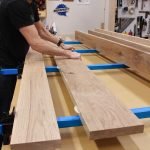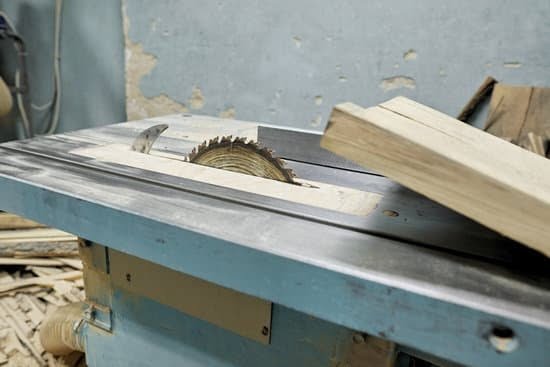A woodworking speed square is a versatile and indispensable tool for any woodworker, providing accurate measurements and precise angles for a wide range of woodworking projects. This square is designed to be used as a saw guide, protractor, and more, making it an essential item in any woodworking toolkit. In this article, we will explore the uses of the woodworking speed square and how it can benefit your woodworking projects.
The history of the woodworking speed square dates back to its origins as a simple measuring tool used by carpenters and woodworkers. Over time, it has evolved into a multifunctional tool that is essential for ensuring accuracy and efficiency in woodworking projects. With its various features and functions, the speed square has become a must-have for woodworkers of all skill levels.
There are several types of woodworking speed squares available in the market, each with its own unique features and benefits. From traditional models to modern innovations, these squares offer different capabilities to cater to diverse woodworking needs. Understanding the different types of speed squares can help you choose the right one for your specific projects and requirements.
History of the Woodworking Speed Square
The woodworking speed square has a rich history dating back to the early 1900s when it was first invented by Albert J. Swanson. Swanson, a carpenter by trade, designed the speed square to address the need for a tool that could quickly and accurately measure angles and make straight cuts. The original speed square was made of aluminum and featured various measurements and angles, making it an essential tool for any woodworker.
Over time, the design of the speed square has evolved to include additional features such as scribe notches, rafter tables, and degree scales, further enhancing its usability in woodworking projects. Today, there are various types of speed squares available in the market, each with its own unique features tailored to different woodworking needs.
The invention of the woodworking speed square revolutionized the way woodworkers approach their projects. With its ability to make precise measurements and cuts, it has become an indispensable tool in any woodworker’s toolkit. Whether you’re a beginner or a seasoned professional, having a quality woodworking speed square can significantly impact the accuracy and efficiency of your projects.
| Woodworking Speed Square | History |
|---|---|
| Origin | Early 1900s |
| Inventor | Albert J. Swanson |
| Material | Aluminum |
| Features | Scribe notches, rafter tables, degree scales |
Types of Woodworking Speed Square
When it comes to woodworking speed squares, there are several different types available on the market, each with its own unique features and uses. One of the most common types is the aluminum speed square, which is known for its durability and lightweight design. These speed squares typically have a 90-degree edge for marking and checking angles, as well as a saw guide for making quick and accurate cuts.
Another popular type of woodworking speed square is the plastic speed square. These are often more affordable than their aluminum counterparts and are also lighter in weight. Plastic speed squares usually come with all the basic features needed for measuring and marking angles, making them great for beginners or those on a budget.
For those looking for a more versatile option, combination speed squares may be the way to go. These tools often include additional features such as protractor scales, rafter tables, and even angle finders, making them ideal for more complex woodworking projects that require precise measurements and angles.
No matter which type of woodworking speed square you choose, it’s important to consider factors such as material, accuracy, and versatility to ensure you’re selecting the most suitable tool for your projects. By taking the time to research and understand the different types available in the market, you can make an informed decision that will ultimately enhance your woodworking experience. The right woodworking speed square can make a significant difference in the quality and precision of your work.
How to Choose the Right Woodworking Speed Square
When it comes to woodworking, having the right tools is essential for ensuring precision and accuracy in your projects. The woodworking speed square is a versatile tool that can be used for various purposes, such as marking angles, measuring length, or checking for squareness. However, with a variety of options available in the market, it’s important to consider several factors when choosing the right woodworking speed square for your projects.
Material and Durability
One of the first things to consider when selecting a woodworking speed square is the material it is made of. Speed squares are typically made from aluminum, steel, or plastic. Aluminum squares are lightweight and durable, making them ideal for everyday use in woodworking projects. Steel squares are robust and provide excellent durability, but they may be heavier to handle. Plastic squares are lightweight and budget-friendly but may not offer the same level of durability as metal options.
Accuracy
Another crucial factor to consider when choosing a woodworking speed square is its accuracy. The square should have clear and precise markings that allow for accurate measurements and angle markings. Some squares come with laser-etched markings that are resistant to fading and provide long-lasting accuracy. It’s important to carefully inspect the markings on the square to ensure that they meet your accuracy requirements.
Additional Features
Consider any additional features that may be beneficial for your specific woodworking needs. Some speed squares come with built-in scribe notches, rafter tables, or angle finders that can enhance their versatility and usability in various projects. Depending on your preferences and project requirements, you may want to opt for a speed square that offers these additional features.
By considering these factors-material and durability, accuracy, and additional features-you can choose a woodworking speed square that best meets your specific needs and ensures precise measurements and angles in your woodworking projects.
Tips and Tricks for Using a Woodworking Speed Square
A woodworking speed square is an essential tool in any woodworker’s toolkit. It is a versatile instrument that can be used for a variety of tasks, including measuring, marking, and creating precise angles. In this section, we will explore some tips and tricks for using a woodworking speed square to ensure accurate measurements and angles in your woodworking projects.
Understanding the Different Features
One of the first steps to effectively using a woodworking speed square is to familiarize yourself with its different features. Most speed squares come with a lip that allows you to easily mark 90-degree angles, as well as other common angles such as 45 degrees and 30 degrees. Understanding how to utilize these features will enable you to make accurate measurements and markings on your wood pieces.
Ensuring Precision
To ensure precision when using a woodworking speed square, it’s important to firmly hold the tool against the edge of the wood piece when making measurements or markings. This will help prevent any inaccuracies that may arise from movement or slippage. Additionally, double-check your measurements and angles before cutting or drilling into the wood to avoid any errors in your project.
Using It as a Saw Guide
Another useful tip for using a woodworking speed square is utilizing it as a saw guide. By clamping the speed square onto your wood piece, you can create straight and accurate cuts with your saw. This is particularly handy for making quick crosscuts or rip cuts without the need for additional measuring tools.
By incorporating these tips and tricks into your woodworking projects, you can make full use of your woodworking speed square to achieve precise measurements and angles, ultimately resulting in high-quality finished products.
DIY Woodworking Projects Using a Speed Square
A woodworking speed square is an essential tool for any woodworker, as it helps in measuring and marking accurate angles. Whether you are a beginner or an experienced woodworker, incorporating a speed square in your woodworking projects can significantly improve the precision and quality of your work. In this section, we will provide a step-by-step guide on how to effectively use a woodworking speed square in various DIY woodworking projects.
Here are some popular DIY woodworking projects where a speed square can be extremely useful:
- Building a wooden bookshelf: Use a speed square to ensure that the shelves are installed at perfect right angles, resulting in a sturdy and well-structured bookshelf.
- Creating picture frames: When cutting the corners of the frame, a speed square can help ensure accurate 45-degree angles, resulting in seamless joints.
- Constructing wooden furniture: Whether building a table, chair, or cabinet, a speed square can be used to measure and mark precise angles for perfect alignment during assembly.
Using a woodworking speed square in these projects not only helps in achieving accuracy but also saves time by eliminating the need for trial and error. Additionally, it allows woodworkers to maintain consistency throughout their projects, resulting in professional-looking finished products.
It’s important to note that mastering the use of a speed square may require some practice. However, with patience and dedication, woodworkers can quickly become proficient in using this versatile tool to enhance the quality of their DIY woodworking projects.
Maintenance and Care of Woodworking Speed Square
A woodworking speed square is a versatile and essential tool for any woodworking project. It is commonly used to measure and mark lumber for various cuts, as well as to check for squareness and lay out angles. To ensure that your woodworking speed square remains accurate and reliable, it is important to properly maintain and care for the tool.
Proper maintenance of your woodworking speed square will not only extend its longevity but also guarantee the accuracy of your measurements. Here are some tips on how to clean and store your speed square:
1. Cleaning: After each use, it is important to remove any dirt, sawdust, or debris from the speed square. Use a brush or compressed air to clean the scale and edges of the tool. If there are stubborn stains or rust spots, a light application of oil can be used with fine steel wool to gently scrub away the blemishes.
2. Storage: When not in use, store your woodworking speed square in a dry and secure place. Hanging it on a pegboard or storing it in a dedicated case will prevent it from being damaged or getting lost among other tools in your workshop.
3. Calibration: Periodically check the accuracy of your speed square by using it alongside other measuring tools such as a combination square or ruler. If you notice any discrepancies, make adjustments as needed to bring it back into proper alignment.
By following these simple maintenance tips, you can ensure that your woodworking speed square remains in top condition, providing precise measurements for all your woodworking projects.
Remember that regular cleaning, proper storage, and occasional calibration are key to preserving the accuracy and longevity of your woodworking speed square. With these practices in place, you can continue to rely on this essential tool for years to come.
Conclusion
In conclusion, the woodworking speed square is a versatile and essential tool for any woodworking enthusiast. Its origins date back to the early 1920s, and over the years, it has evolved to encompass various types such as rafter squares, framing squares, and combination squares. When selecting the right speed square for your projects, it is important to consider factors such as material, accuracy, and ease of use.
Using a woodworking speed square effectively requires some practice and skill, but with the right tips and tricks, it can significantly improve the accuracy of measurements and angle cuts in your projects. Whether you are a beginner or an experienced woodworker, incorporating a speed square into your DIY projects can streamline tasks and lead to more precise results.
Furthermore, proper maintenance and care of your woodworking speed square will ensure its longevity and accuracy. By regularly cleaning and storing the tool correctly, you can extend its lifespan and continue to benefit from its precision in all your woodworking endeavors. Overall, having a woodworking speed square in your toolkit is crucial for achieving high-quality results in your woodworking projects.
Frequently Asked Questions
What Is a Speed Square Used for in Woodworking?
A speed square is a versatile tool used in woodworking for measuring, marking, and making straight cuts. It can also be used to determine angles and as a saw guide for cutting.
How Big of a Speed Square Do I Need?
The size of the speed square you need depends on the scale of your woodworking projects. For general woodworking tasks, a 7-inch speed square is adequate. However, for larger projects or more precision work, a 12-inch speed square may be necessary.
Who Makes the Best Square for Woodworking?
There are several reputable brands that make quality squares for woodworking. Some popular options include Swanson, Stanley, and Irwin. The best square for woodworking ultimately depends on individual preferences and specific project needs.

Hi everyone! I’m a woodworker and blogger, and this is my woodworking blog. In my blog, I share tips and tricks for woodworkers of all skill levels, as well as project ideas that you can try yourself.





